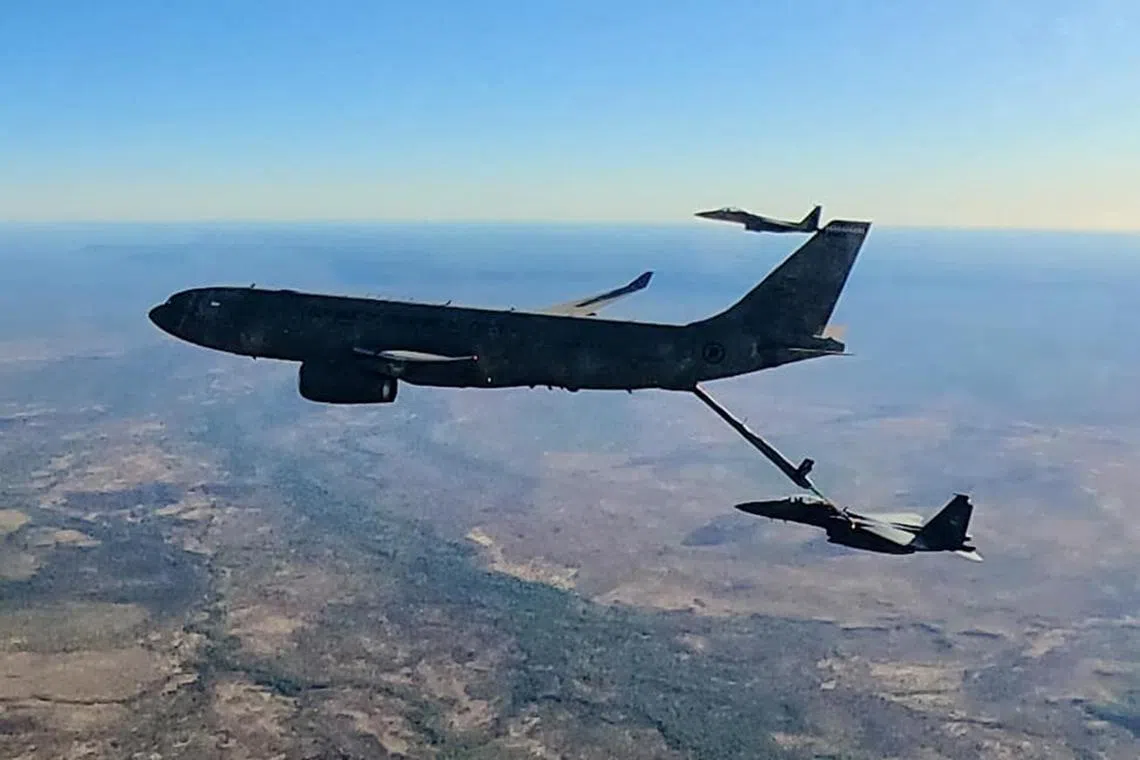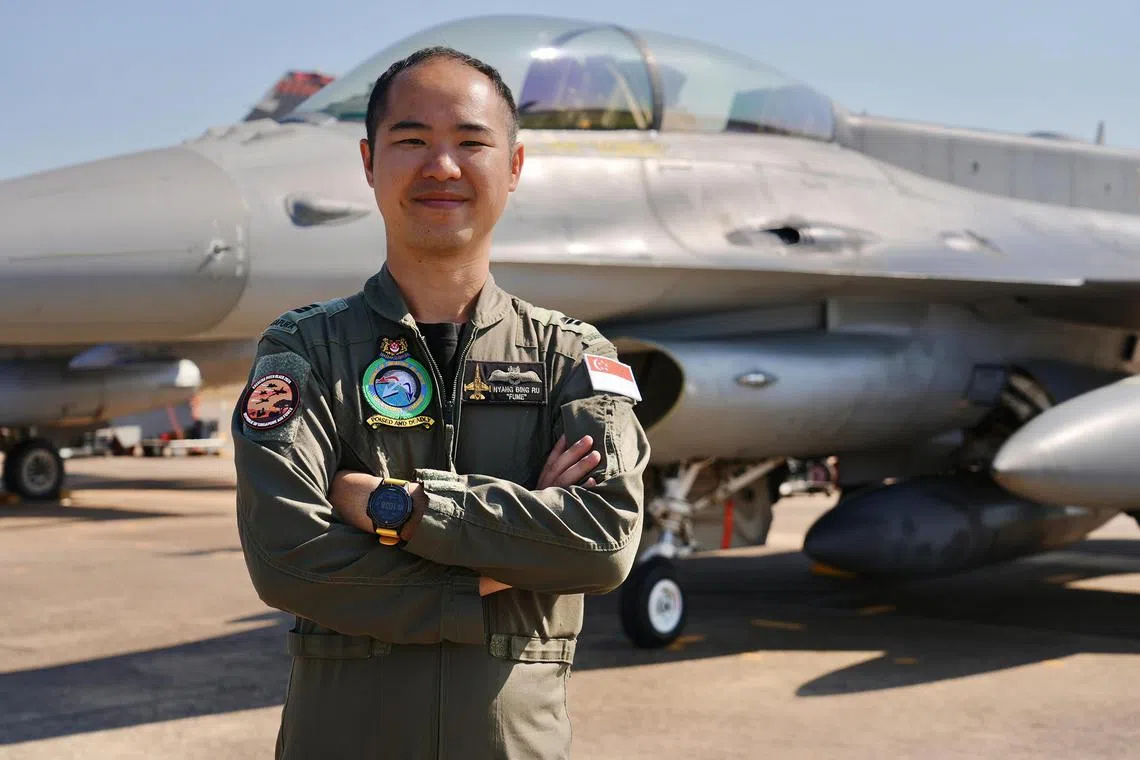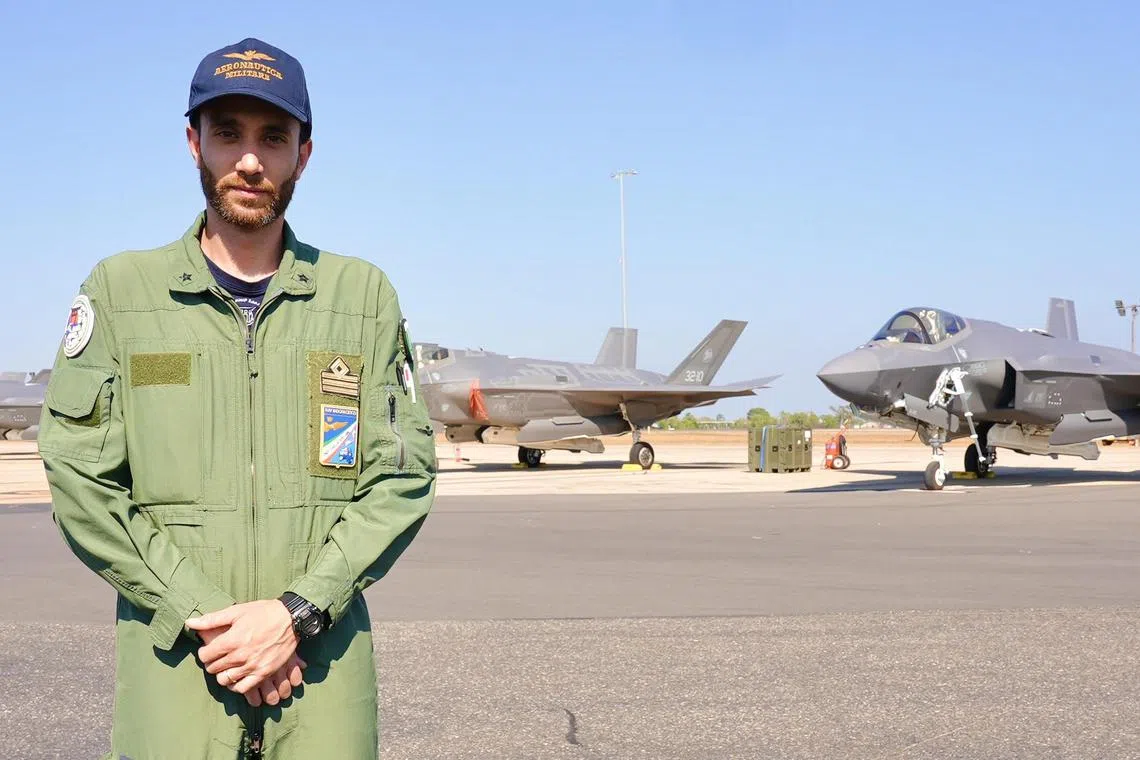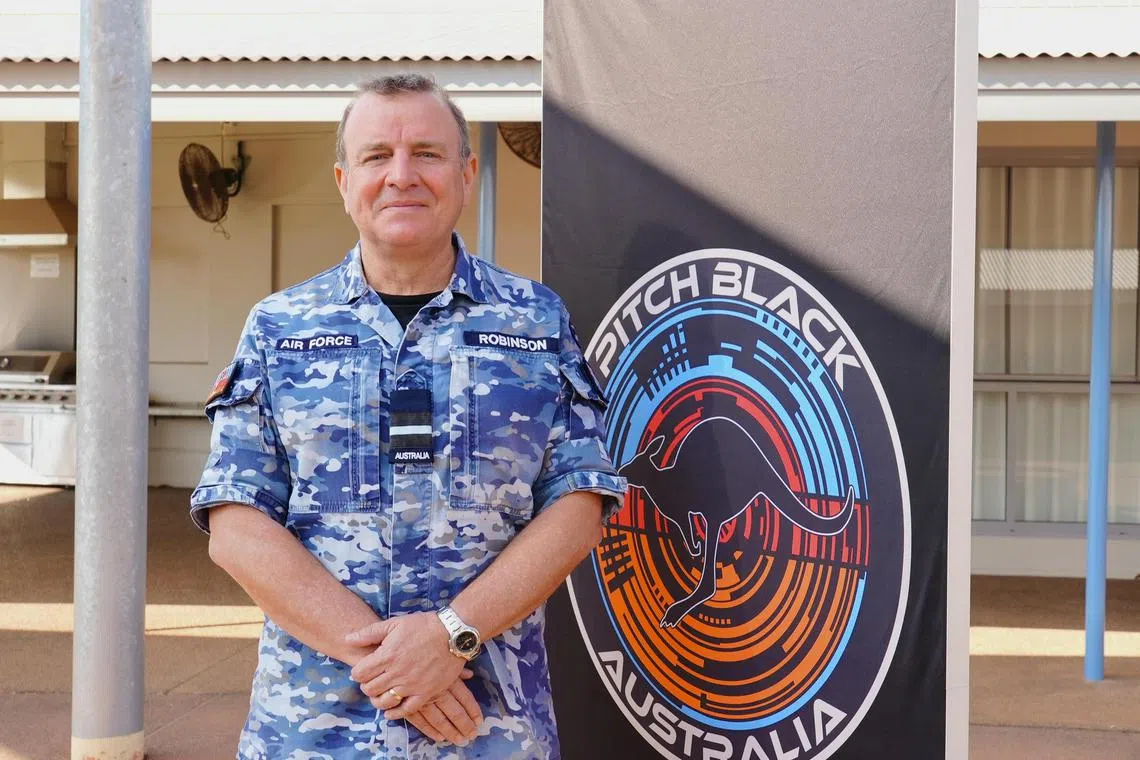Flying alongside F-35s gives RSAF insights to stealth jet’s capabilities at Exercise Pitch Black
Sign up now: Get ST's newsletters delivered to your inbox

The Republic of Singapore Air Force's A330 MRTT conducting air-to-air refuelling with F-15SG.
PHOTO: RSAF/FACEBOOK
Follow topic:
DARWIN, Australia – Singapore’s air force has locked on to the opportunity to observe the F-35 Lightning II in action at the large-scale Exercise Pitch Black joint exercise
One of the world’s most advanced multi-role combat jets, the F-35 Lightning II has advanced stealth capabilities and can perform a variety of missions, such as air-to-air combat, air-to-ground strikes, intelligence gathering and reconnaissance.
The aircraft has two variants: The F-35A takes off and lands on runways like a typical aircraft, while the F-35B is a short take-off variant that needs just around 250m of runway and can land vertically.
The Royal Australian Air Force (RAAF) is fielding the F-35As at the exercise taking place over Australia’s sparsely populated Northern Territory, while the Italian Air Force and Navy are flying F-35As and F-35Bs.
Singapore is expected to take delivery of its first four F-35Bs in 2026, and has ordered another eight F-35A fighters
This will make Singapore the fourth country to have both variants of the F-35, after Italy, the United States and Japan. Japan’s F-35Bs are set to join its F-35A fleet in 2025.
Colonel Lee Mei Yi, exercise director of the Republic of Singapore Air Force contingent at the exercise, said working with F-35s in both air-to-air and air-to-ground missions at Pitch Black allows the RSAF to refine its approach to integrating its future F-35s with its existing fleet of fighter jets.
The three-week exercise from July 12 to Aug 2 is the largest Pitch Black in its 43 years, involving 140 aircraft and more than 4,400 personnel from 20 countries operating primarily from the RAAF base in Darwin. The RAAF hosts the biennial joint air warfare training, which involved up to 80 aircraft in previous exercises.
More than 450 RSAF personnel are involved, along with four F-15SGs and six F-16C/D fighter jets, one G550 Airborne Early Warning aircraft and a A330 Multi-Role Tanker Transport aircraft.
Col Lee said the exercise allows the RSAF to interact with the air forces of different countries, some of which it has not worked with before. “This is a great opportunity for us to interact at a professional level during planning conferences, going on to fight together in the air, and debriefing together.”
The large-scale training missions entail multinational fighter aircraft carrying out different missions in simulated combat by day and night against an enemy.
Some are assigned to strike ground targets alongside others tasked with shooting down enemy aircraft, while support aircraft like tankers provide mid-air refuelling, and airborne early warning aircraft fitted with powerful radars scan for possible air or ground threats.
Captain Nyang Bing Ru, an F-16 pilot with 143 Squadron, said one of the most valuable training experiences at Pitch Black is the opportunity to fly as part of a large force, particularly at night.
“This allows me to better think about how challenging the night environment is and how I need to work harder with partner assets to keep ourselves safe while achieving mission success.”

Captain Nyang Bing Ru is an F-16 pilot with the 143 Squadron.
ST PHOTO: SHAWNA SIOW
Northern Australia offers a large airspace for training, in contrast to the limited airspace RSAF has over land-scarce Singapore and over the South China Sea, allowing pilots to “fully maximise and employ (the capabilities) of our aircraft beyond what we would be able to do back home”, he added.
CPT Nyang, who flew missions alongside F-35s at the exercise, said one of the advantages of the F-35’s stealth and sensor fusion is that it is able to more effectively seek out moving targets in heavily defended areas for swifter attacks.
Italian Air Force F-35A pilot Mirko, who did not give his rank and full name due to security reasons, said the F-35 was “more than a fighter jet”.
“Thanks to its advanced sensor and communications capabilities, it is able to manage the battlefield, to see and to have full situational awareness of the battlefield and other aircraft.”

Italian Air Force F-35 pilot Mirko said the F-35 was “more than a fighter jet”.
ST PHOTO: SHAWNA SIOW
RAAF Air Commodore Pete Robinson, who is the exercise director at 2024’s Pitch Black and an F-35 pilot, said the stealth jet can complement the capabilities of older aircraft.
“When you understand the strengths of all the different aircraft as you bring them together, you can make a really powerful air combat capability.”

Royal Australian Air Force Air Commodore Pete Robinson said the stealth jet can complement the capabilities of older aircraft.
ST PHOTO: SHAWNA SIOW
Air Commodore Robinson noted that the RSAF had been one of the first foreign air forces invited to join Exercise Pitch Black, making its debut in 1990.
The Republic has participated in every edition since, he said, and has been an “outstanding” contribution to the exercise over the years.


